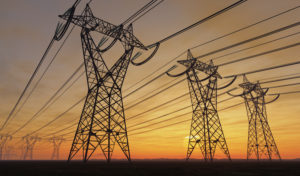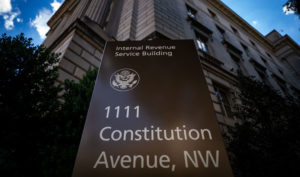
A utility commission decision—criticized for discouraging solar energy—highlights challenges facing the electricity sector.
The Incredible Hulk is angry with Nevada’s Public Utilities Commission (PUC)–or at least the actor who plays him is. Mark Ruffalo was one of many protestors who gathered in Las Vegas to object to a policy change they say hurts the environment. The controversy stems from a recent Nevada PUC decision that makes investing in rooftop solar panels less attractive to homeowners.
Nevada electricity regulators use a policy called “net metering” to promote renewable energy. Under this policy, utility companies charge customers that produce their own power only for the net difference between energy consumed and energy produced by their homes. Whenever a customer produces more energy than they use, the utility essentially buys the extra power from the customer.
Without net metering, extra electricity that flows into the electrical grid is not compensated. In that case, the only financial benefits for consumers with rooftop solar panels are the savings from buying less electricity from the utility.
But the Nevada PUC has issued an order making two changes in net metering billing rates that will make solar power less attractive. The first change is gradually to increase the monthly service charge for customers who participate in net metering from $12.75 to $38.51. This is a charge for being connected into the grid and will not change regardless of energy use. The PUC did not similarly increase service charges for customers that do not use net metering.
The second change is gradually to lower the rate at which rooftop solar generators are credited for the electricity that goes back to the grid. Before the recent PUC decision, the “price” at which net metering customers sold energy back to the utility was equal to the retail rate that consumers paid for usage, about 11 cents per kilowatt-hour. Under the new rules, after a 4-year phase in, consumers who produce excess energy will be “paid” according to the wholesale rate of electricity, currently about 2.6 cents.
The changes have sparked protests from consumers who invested in rooftop solar panels relying on the old rate structure. According to one solar advocacy group, The Alliance for Solar Choice, the new policy will wipe out future savings from existing solar panels and discourage new investment in the technology.
The largest utility company in Nevada, NV Energy, claims that the changes are fair and necessary. It has argued to the PUC that the old rate schedule effectively subsidized net meter customers at the expense of other rate payers. Before the Nevada PUC decision, utilities were buying power at an artificially high rate and “paying” more for electricity than they would if they purchased from power plants at wholesale rates. Fixed overhead costs were not covered in these transactions and were therefore passed on to other consumers in the form of increased usage charges.
Nevada may be a test case for a broader shift in the utility sector toward “distributed generation” Distributed generation is when electricity is not produced by a single hub like a power plant, but by many small sources—for example, by consumers with rooftop solar panels.
Net metering is one tool that regulators use to encourage distributed generation of renewable energy by lowering energy bills for homes with solar panels. As rooftop solar technology becomes more advanced and affordable, other states may similarly reform net metering policies and reduce reimbursement rates to ensure that utility companies can maintain affordable and reliable access to electricity.
In 2013, the Edison Electric Institute (EEI) published a report forecasting disruptions to the business model of electricity utilities caused by distributed generation. The report argued that a perfect storm of economic, technological, and regulatory changes that encourage investment in rooftop solar has the potential to transform how consumers get electricity, to the detriment of electric utilities.
Historically, electric utilities have held monopolies over the production, transmission, and distribution of electricity within a region, and were considered one of the safest investments. To address the potential harm to consumers from natural monopolies that could charge inflated prices, state regulators formalized monopolies and set caps on utility company profits.
But distributed generation challenges the traditional utility business model. Large power producers and utility companies must now compete with a new class of smaller producers—the consumers themselves. Consumers are not only making their own power and selling it to utilities, but are selling it to their neighbors using the utility’s power lines. With net metering, power companies must buy energy from consumers at high retail prices before buying from large producers at wholesale rates, making it more difficult for utilities to cover their overhead costs.
Net metering arguably encourages investment in rooftop solar when selling extra power is well compensated. However, if the net metering rates drop, it may start to make more sense for consumers to store extra power rather than sell it back to the utilities. Tesla CEO Elon Musk recently announced an improved battery for storing electricity. Although the battery is designed to store rooftop solar energy for use in the evening, it can also be used to store electricity purchased from utilities when prices are low. Consumers can then fall back on this supply or sell it to other consumers when prices increase.
According to a 2014 report from the investment bank Barclays, technological gains in electricity storage can threaten utility profits by enabling some consumers to become completely energy self-sufficient. If enough of these “grid defectors” stop using power lines, costs increase for other customers because the cost of maintaining the power lines will be spread over fewer people.
The challenges posed by these changes are likely even without regulatory incentives such as net metering. The Rocky Mountain Institute (RMI), an energy policy think tank, predicts that if current trends continue, grid defection will be cheaper for individual consumers than buying from utilities within just a few decades.



